The International Cat Association (TICA) recognizes 73 breeds. Each of them has a unique personality and characteristics. Unlike dogs, cats have always had a dual function for humans: Companionship and mouse hunting. However, many of them seem more in touch with their wild side than others. This makes them look more exotic and charming. This fact probably contributes to their popularity.
The challenge you will likely face if you want to get one of these exotic cat breeds is availability. You will probably also pay the price for this privilege. However, this fact probably increases the popularity of these pets. If you think cats are just Siamese and Tabby, you will be surprised at the other breeds you can find. We’ve also added some legal cat species to the mix.
Disclaimer: Pet Keen does not endorse the practice of keeping wild animals as pets. This article is for informational purposes only.
Is It Hard to Care for These Cats?
For pet owners who expect pet dog and cat behavior, exotic cats can seem like challenging pets. The differences between owning an exotic cat and a typical domestic cat are similar to the comparison between a skydiver and a golfer.
However, for the more adventurous homeowners, with the right income, the right housing situation, and permits (or laws that don’t regulate pet ownership), they can be exceptionally rewarding. The decision to care for animals like these is life-changing and not a decision to be made lightly.
Related also: 13 Things About Blue Point Siamese You Should Know I Discerning Cat
What to Consider Before Buying an Exotic Cat Pet
If you are considering getting an exotic cat as a pet, be sure to do thorough research. As a general rule, it is good to know that exotic cats:
- They mark their territory by spraying. This can include furniture, walls, and their owners.
- They require large outdoor cages and/or a room dedicated to the animal.
- You should consult a veterinarian with experience in zoo animals. This can have a significant cost. It can also be difficult to find a veterinarian with the right knowledge and experience for your pet.
- They may have strict dietary requirements, some of which can be expensive.
- The purchase price ranges from $ 1,500 to $ 20,000.
- They are illegal in most states and require permits and licenses that are often not granted to pet owners.
- It can prevent you from traveling.
- It may not get along well with other pets.
- It is very difficult to go home!
The 14 exotic cat breeds to keep as pets:
1. sphinx
The Sphynx is immediately striking in its appearance, with its oversized ears and compact body. This breed is also unusual because it has down instead of fur. They are active, loyal, and affectionate cats. They are intelligent animals that can be taught even simple tricks, provided of course that they are treats.
2. Abyssinian
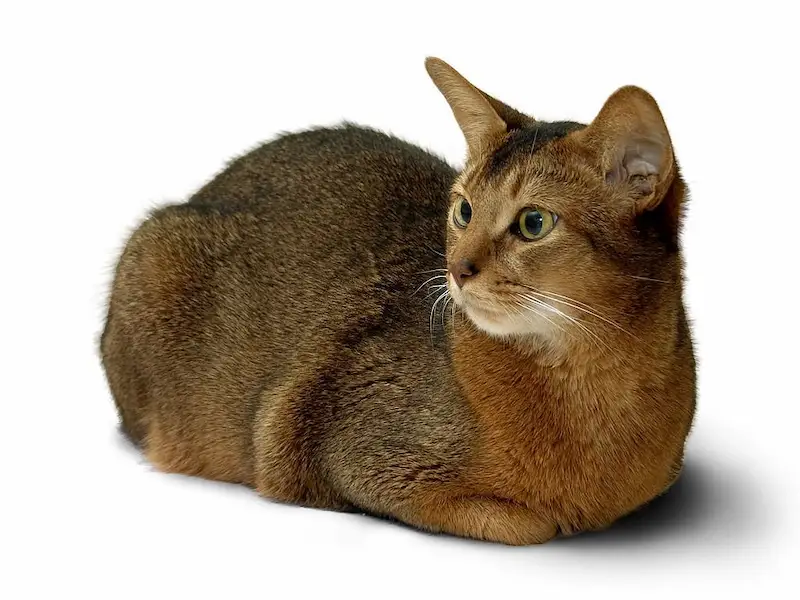
The Abyssinian is an ancient breed whose origins date back to the Egyptian era of the pharaohs. It is a slender and graceful animal that, due to its appearance, could be reminiscent of a small mountain lion. He is another sociable animal that loves the company of his family, dogs, and otherwise! It is the Peter Pan of Cats. He always stays in touch with his inner kitty.
3. tiger
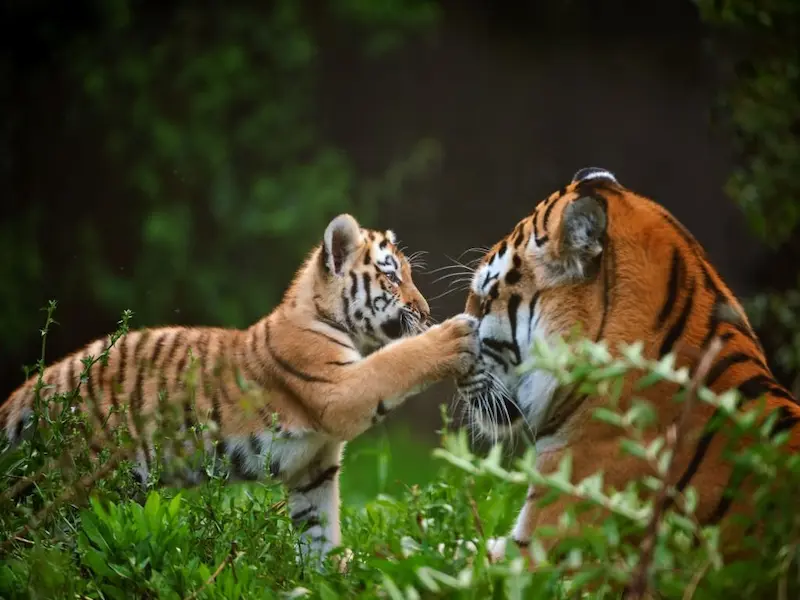
The tiger may not be the first animal thought of as a pet. However, many people do. You will be surprised to find that more people live here than in their natural habitat.
You can legally own a gun in Idaho or Louisiana, provided you have a permit. But things are likely to change soon. According to the International Union for Conservation of Nature and Natural Resources (IUCN), the species is at risk of extinction.
4. Bobcat
The bobcat lives in forests and mountains throughout North America. It is a quiet, nocturnal animal that feeds mainly on birds, rodents, and other small mammals. Despite being a wild animal, the bobcat sometimes adapts to the presence of man and lives in populated areas. In some cases, this can result in the death of pets or livestock. In Michigan and Missouri, it is legal to possess them with a permit.
What to Know About Bobcats
Bobcats are stocky, medium-sized cats native to North America.
Bobcats have perhaps the best pet personality of any other exotic cat because they bond strongly with their owners.
They also love dogs and are very affectionate.
5. Turkish van
The Turkish Van is a curious animal that needs a master who can understand his unique personality. The origins of the breed date back to ancient Turkey. He is one of the few cats that love water. A study from the University of Helsinki identified this breed as one of the least tolerant of other cats. This makes sense given the proximity to its wild side.
6. Egyptian Mau
The Egyptian Mau is native to Egypt, hence the other popular cat name of the pharaoh. It is a small but long-lived animal, sometimes living up to over 18 years. It is an easy-to-care-for breed that gets along well with almost everyone. Only occasional grooming is needed. He is an affectionate cat who loves to share his love for him.
7. ocelot
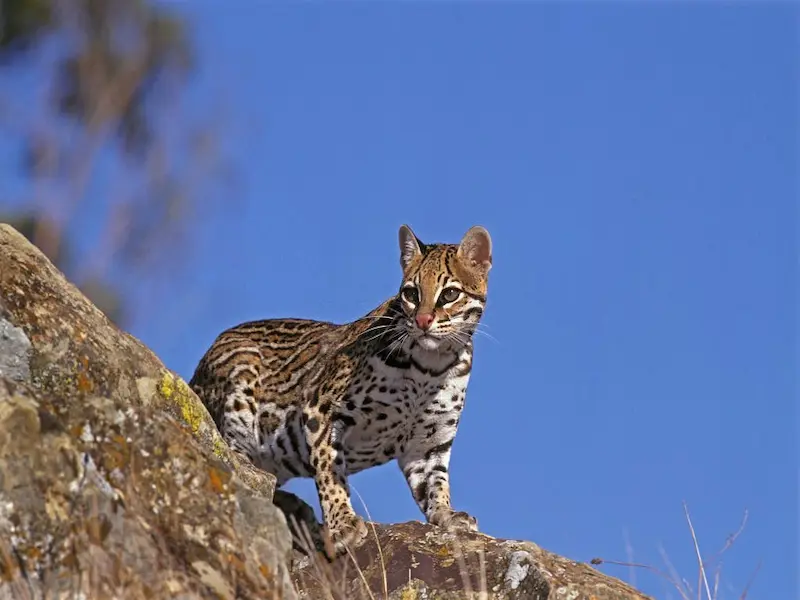
The ocelot is an adaptable animal that has expanded its range in nature in recent years. It is an active cat that can sleep less than pets. It is usually a solitary animal but can form small groups in densely populated areas. It hunts by smell but also has keen eyesight. They usually take small mammals, occasionally crustaceans or fish. With a permit, it is possible to own an ocelot in Florida or Texas.
Related also: 9 Grey and White Cat Breeds (With Pictures)
8. Cat of the Savannah
The Savannah cat is an outgoing animal who loves being alone but readily shares his love with the family. It is a large animal, in a relative sense. He is also smart, not unlike having a baby in the house.
If there is a problem around the corner, this cat is sure to find it thanks to its inquisitive nature. This animal needs mental stimulation to be happy, which is why interactive toys are an excellent option.
9. Nebelung
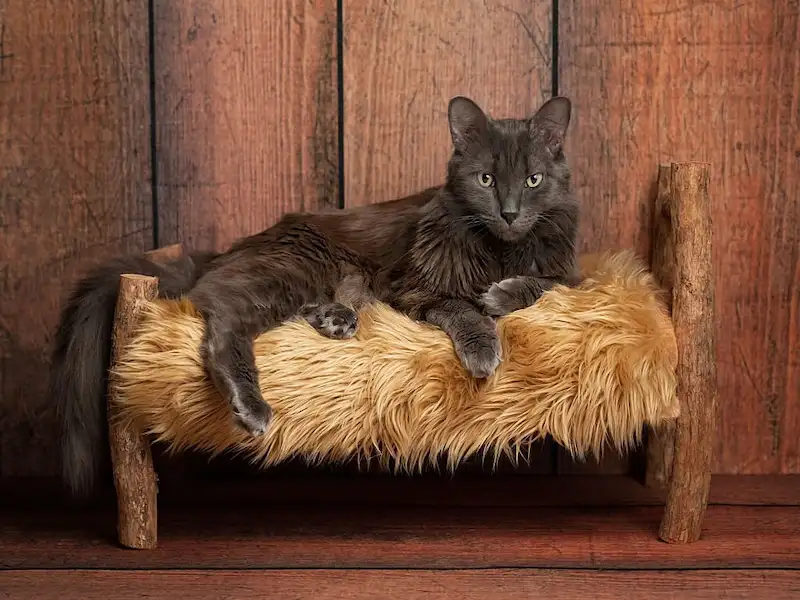
One of the newest breeds recognized by TICA, the Nebelung is a rare find. She is a beautiful cat with a silky grey-blue coat. He is a calm and gentle animal who is as affectionate as he is playful.
This kitten prefers the company of his family and may not make easy friends with strangers. Some would describe this pet as a cerebral animal that takes its time deciding whether to make friends with new people.
10. Ocicat

The Ocicat is another exotic-looking animal that is sure to turn heads with its beautiful coat. Despite its name, the breed originally hails from the United States. This cat is so adorable, even with people she meets for the first time. It is a playful pet that can resemble a dog in behavior. He can even play tag with you or the kids.
11. Canadian lynx
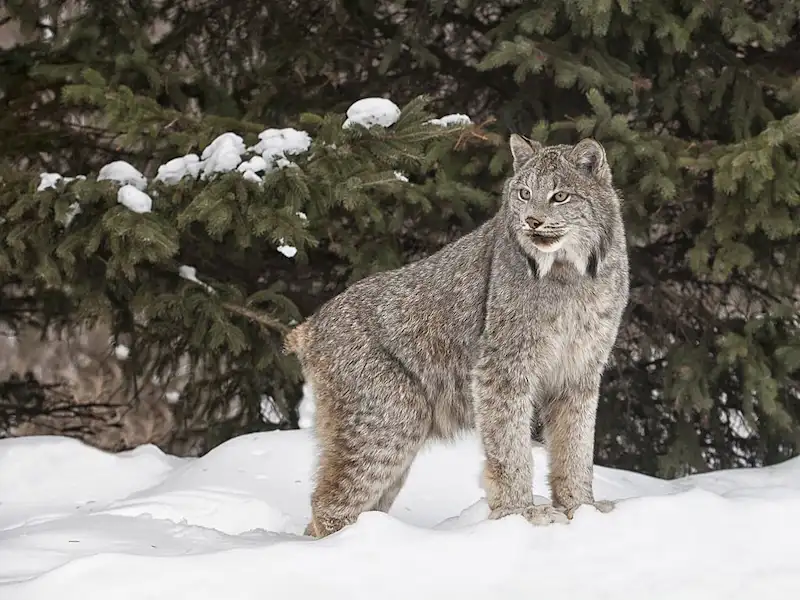
The Canadian lynx is an animal native to the cold, desolate forests of North America. Like many cats, she is a loner who prefers her company to humans. When he’s not snowshoeing hares, he’s in the trees exploring his territory. The two species have a cyclical relationship, the pattern of which is evident in the prey species. The Canadian lynx is a Least Concern according to the IUCN.
12. Bengal
The coloring and pattern give Bengal its name. This is not surprising given its genetic relationship to the Asian leopard cat. This breed is very people-friendly and makes an agreeable pet. As you’d expect, it’s an active animal, always on the move unless it’s bedtime. This kitten does best when it has a feline companion or lives in an active home.
13. Toyger
The Toyger is another breed that calls to mind its wild relatives. With his characteristic, striped appearance, he stands everywhere as a tiger. It is a gentle animal with an affectionate personality that makes it a suitable family pet. He is a medium-sized cat with an adaptable nature that makes him quite adaptable for a cat. He’s also a vocal cat who always has something to say.
14. Caracal
The caracal is an animal of the steppes and scrubs forests of Asia and Africa. Its most striking feature is its large ears. He has a keen sense of hearing that allows him to sometimes hunt through sound alone. The caracal is a nocturnal big cat that spends most of its time on the move as a loner. You can keep them in Florida or Idaho with a permit.
15. Serval cats
What you need to know about servals
- Servals, native to Africa, are probably one of the most popular exotic cats in the United States.
- Occasionally, a domestic serval (or Savannah cat, see below) runs away from a house and is referred to in the media as a cheetah, which it superficially resembles due to its spotted markings and long legs. However, the serval has large pointed ears like the fennec fox and is much smaller than the large feline that shares its range in the wild.
- People often look at a serval thinking it is a threat to its owner’s life, but this medium-sized cat is only interested in small prey like birds, rodents, and possibly a small antelope species.
- Servals flee human presence and it has not yet been documented that they killed a member of our species.
- As you can imagine, a serval bite is to be avoided. All exotic cats can bite if they feel threatened or cornered.
- Servals are aloof, and calm, and can be tolerant of other pets when kept indoors.
- They are also easier to confine because they don’t like to climb.
- Servals are often used as teaching animals; you will have happened to see them lead on a leash and demonstrate their incredible jumping skills to the public.
- Servals are prone to gaining weight without adequate exercise and enrichment, so this species needs an owner to encourage it.
16. Fishing cats
What to know about fishing cats
As the name suggests, this cat loves to play in the water.
Fishing cats are not very common in the pet trade. They are typically only kept in USDA-licensed facilities, as this is a species managed by Felid Tag (a wild cat advisory group). Kapi’yva Exotics manages the only private collection of these animals (it is accredited by the Zoological Association of America).
The 2008 IUCN Red List of Threatened Species classifies fishing cats as endangered. However, they have been introduced into the private pet trade in other countries (possibly by illegal or unethical means).
Due to their unusual presence as pets, little information is available about them.
17. jungle cats
What to know about jungle cats
Jungle cats are native to Asia, Sri Lanka, and Egypt. They are the largest living species of Felis.
This is another wild cat species that is used to create hybrids with domestic cats (especially a Chausie or a Jungle Bob).
In nature, this species can live about 12-14 years. It can live 15-20 years in captivity.
Jungle cats are also uncommon nervous animals in captivity, such as the Ocelot and the Geoffroy cat.
They are also fragile cats that need privacy in a quiet home (or to be kept in a fairly large outdoor enclosure most of the time).
They are not in danger, but their population is declining.
How to Rehome an Exotic Cat
If you manage to have one of these pets as a pet, you may be overwhelmed. Many owners are surprised at how much work (and money) these cats require. Many owners make all possible preparations, but they can find themselves in trouble. This happens with common pets. It certainly happens more often with exotic animals.
If you find yourself in this situation, it is in the pet’s interest to find him a new home. It is advisable to contact an animal shelter. These organizations often take exotic animals from owners who can no longer care for them. It is also a good idea to contact an animal rescue agency.
List of hybrids of exotic cats
- Savannah cat or Ashera cat (serval x domestic cat)
- Chausie (jungle cat x domestic cat)
- Jungle Bob (Jungle Cat x Pixie Bob, a breed of domestic cat)
- Bengal cat (Asian leopard cat x domestic cat)
- Safari cat (Geoffroy cat x domestic cat, usually Mau or Egyptian Ocicat)
- Machbragal (catfish x domestic cat)
Summary
Exotic cats often require a lot more work and planning than the average house cat. Hybrids also take a long time from their owners, although this often doesn’t mean they are more affectionate or loving. Many of them do not fit into human habitation and therefore are not suitable for everyone.
This means that before proceeding with the purchase it is necessary to have a clear idea of what you are going to encounter. Exotic cats are often only suitable for certain people.
Questions and answers
Why do exotic cats pee on walls?
Like some domestic cats, exotic cats mark their territory by splashing.
Can you have one of these exotic animals in Texas or Tennessee?
Yes, most of them are legal in these two states.
Is the Fishing Cat listed on the ESA?
Yes.
If I am allergic to cats, can I tame exotic cats?
The hair of exotic cats is effective, like that of domestic cats.


